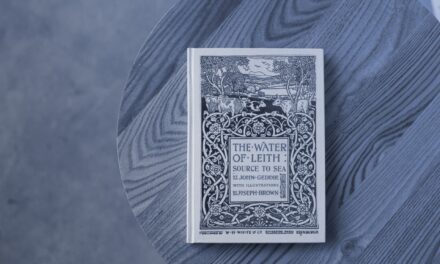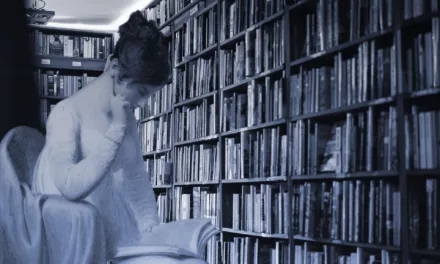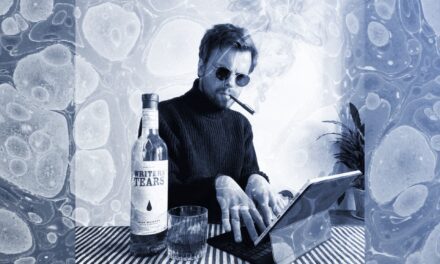
An Insider’s Guide to Writing the Perfect Lyrical Essay

As the name might suggest, the lyrical essay or the lyric essay is a literary hybrid, combining features of poetry, essay, and often memoir. The lyrical essay is a form of creative non-fiction that has become more popular over the last decade.
There has been much written about what lyrical essays are and aren’t, and many writers have strong opinions about them, either declaring them expressive and playful, or self-indulgent and nonsensical.
Today, you’ll learn what a lyrical essay is, what literary elements and techniques they usually employ, and how they depart from other forms of writing and why writers might choose to write them. You’ll also find recommendations for some top lyrical essays to start familiarising yourself with.
What is the lyrical essay?
Lyrical essays combine the rich, figurative language and musicality of poetry with the long-form focus of the essay. A lyrical essay is like the poem in its shapeliness and rhythmic style, but it also borrows from elements of the essay, using narrative to explore a particular topic in an extended way.
What makes this form of writing so distinctive is that it draws attention to its own use of language. Like poems, lyrical essays create certain effects with the words they choose, and are condensed in the way poetry is, attempting to communicate complexity and depth in as few words as possible.
What makes a good lyrical essay?
As with essays and poems, lyrical essays can be about any subject. Many lyrical essays tend to engage with topics such as philosophy, art, culture, history, beauty, politics, and nature, or a mixture of these subjects. They typically focus on a series of images of a person, place, or object, with the aim of evoking emotion in the reader by using very sensory details. A lyrical essay is written in an intimate voice, usually in the first person with a conversational and informal tone. Often, they are memoiristic, but they don’t have to be.
While lyrical essays take on the longer-form shape of essays, they are not organized as a narrative, with one event unfolding in a chronological or even logical order. Instead, the writer usually creates a series of fragmented images using figurative language and poetic techniques in a looser, more playful way. Some lyrical essayists draw on research and fact to inform their writing, but lyrical essays are usually more suggestive and explorative than they are definitive or conclusive.
Creative techniques
Like poems, lyric essays often use white space creatively. Text can be displayed in chunks, bullet points, and on only parts of the page, rather than conforming to the typical paragraph structure you’d find in normal prose. Lyric essays might include asterisks, double spaces, and numbers to frame parts of the writing in new ways. They sometimes include drawings, documents, photos, or other images that add meaning to the words in some way.
As with poetry, reading lyrical essays can be an intense experience. Instead of being immersed in narrative and plot, the reader is immersed in structure and form, always being reminded of how the language is shifting. Lyric essays are playful, and as such, they can surprise and delight you with their ingenuity.
Lyrical essays usually contain some of the following techniques and features:
- Poetic language – alliteration, assonance, and internal rhyme
- Figurative language – metaphors and similes
- Intimate voice and tone – first person in a conversational and friendly style
- Imagery – sensory images of people, places, things, objects, and ideas
- Variety – an array of sentence styles and patterns
- Questions – posed for the reader to answer
- Juxtaposition and contradiction
- Rhythm or rhythmic prose
- Creative presentation of text – text displayed in a fragmented way, with white space, asterisks, subtitles etc to separate or highlight sections of the essay
- Inconclusive ending – often ends without answering the questions posed in the essay
Literary reception
One of the most popular criticisms of the lyrical essay is that they are self-indulgent. Some writers and readers feel strongly that lyrical essays are simply disjointed thoughts that are strung together without any order and that they go nowhere. Some people criticise them as a stream of consciousness, but that is also what others like about them. Those who defend lyrical essays think that they are one of the most exciting and unique forms of writing.
Deborah Tall, an American writer, poet and teacher, explains that the fragmented nature of lyrical essays is what makes them so interesting. She said that lyrical essays take shape “mosaically” and that their power and importance are “visible only when one stands back and sees it whole.” She goes on to say that the story a lyrical essay tells “may be no more than metaphors. Or, storyless, it may spiral in on itself, circling the core of a single image or idea, without climax, without a paraphrasable theme”. But she celebrates this very fact, as it is this unique construction that elucidates meaning.
Lyrical essays allow writers the freedom to push poetic prose until an important and emotional message pops from the page.
Recommended Lyrical Essays
What’s Missing Here? A Fragmentary, Lyric Essay About Fragmentary, Lyric Essays by Julia Marie Wade (from A Harp In the Stars: An Anthology of Lyric Essays)

What’s Missing Here? is an extraordinary piece of meta-writing – a lyrical essay about lyrical essays – from author and Professor of creative fiction, Julia Marie Wade. It is an absolute joy to read, at once challenging and fun, and also highly informative as it uses the techniques of lyrical essays to explain what they are and what they can do.
It’s one of the best examples of a clever and engaging lyrical essay, and it’s from a fantastic collection that is worth delving into if you’re interested in learning more about this unique literary hybrid.
Don’t Let Me Be Lonely by Claudia Rankine

In Don’t Let Me Be Lonely, Claudia Rankine explores isolation, depression, death, and violence in post-9/11 America.
Rankine writes in short sections surrounded by white space and uses images of the television to explore our relationship to the media. It’s a powerful look at culture that is meditative and achingly sad from one of America’s best poets.
Bluets by Maggie Nelson

Maggie Nelson is a genre-busting writer who defies classification. Bluets winds its way through depression, divinity, alcohol, and desire, visiting famous blue figures including Joni Mitchell, Billie Holiday, Leonard Cohen, and Andy Warhol along the way. While its narrator sets out to muse about her lifelong obsession with the colour blue, she ends up facing the painful end of an affair and the grievous injury of a friend.
Bluets is made up of short essayistic, poetic paragraphs, organized in a numbered list. It’s a vulnerable, personal, and philosophical lyrical essay, full of innovation and grace.
Note: All purchase links in this post are affiliate links through BookShop.org, and Novlr may earn a small commission – every purchase supports independent bookstores.































